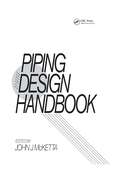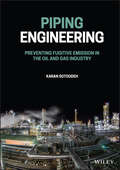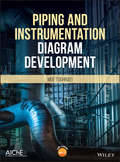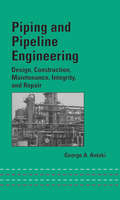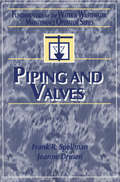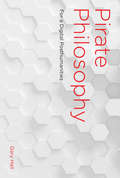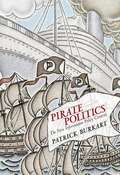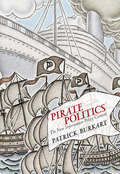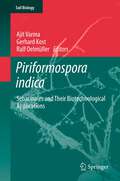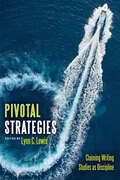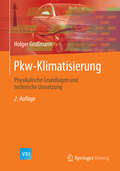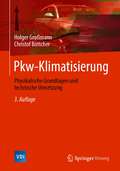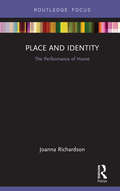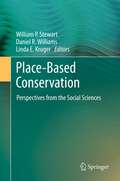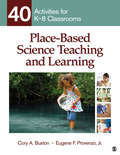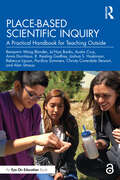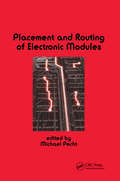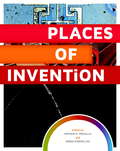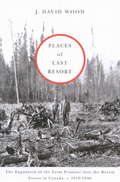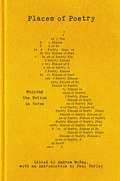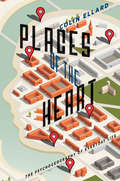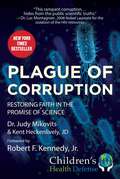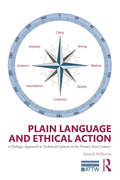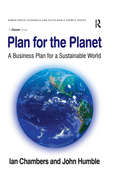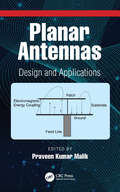- Table View
- List View
Piping Design Handbook
by John J. MckettaThis encyclopedic volume covers almost every phase of piping design - presenting procedures in a straightforward way.;Written by 82 world experts in the field, the Piping Design Handbook: details the basic principles of piping design; explores pipeline shortcut methods in an in-depth manner; and presents expanded rules of thumb for the piping desig
Piping Engineering: Preventing Fugitive Emission in the Oil and Gas Industry
by Karan SotoodehEliminate or reduce unwanted emissions with the piping engineering techniques and strategies contained in this book Piping Engineering: Preventing Fugitive Emission in the Oil and Gas Industry is a practical and comprehensive examination of strategies for the reduction or avoidance of fugitive emissions in the oil and gas industry. The book covers key considerations and calculations for piping and fitting design and selection, maintenance, and troubleshooting to eliminate or reduce emissions, as well as the various components that can allow for or cause them, including piping flange joints. The author explores leak detection and repair (LDAR), a key technique for managing fugitive emissions. He also discusses piping stresses, like principal, displacement, sustained, occasional, and reaction loads, and how to calculate these loads and acceptable limits. Various devices to tighten the bolts for flanges are described, as are essential flange fabrications and installation tolerances. The book also includes: Various methods and calculations for corrosion rate calculation, flange leakage analysis, and different piping load measurements Industry case studies that include calculations, codes, and references Focuses on critical areas related to piping engineering to prevent emission, including material and corrosion, stress analysis, flange joints, and weld joints Coverage of piping material selection for offshore oil and gas and onshore refineries and petrochemical plantsIdeal for professionals in the oil and gas industry and mechanical and piping engineers, Piping Engineering: Preventing Fugitive Emission in the Oil and Gas Industry is also a must-read resource for environmental engineers in the public and private sectors.
Piping and Instrumentation Diagram Development
by Moe ToghraeiAn essential guide for developing and interpreting piping and instrumentation drawings Piping and Instrumentation Diagram Development is an important resource that offers the fundamental information needed for designers of process plants as well as a guide for other interested professionals. The author offers a proven, systemic approach to present the concepts of P&ID development which previously were deemed to be graspable only during practicing and not through training. This comprehensive text offers the information needed in order to create P&ID for a variety of chemical industries such as: oil and gas industries; water and wastewater treatment industries; and food industries. The author outlines the basic development rules of piping and instrumentation diagram (P&ID) and describes in detail the three main components of a process plant: equipment and other process items, control system, and utility system. Each step of the way, the text explores the skills needed to excel at P&ID, includes a wealth of illustrative examples, and describes the most effective practices. This vital resource: Offers a comprehensive resource that outlines a step-by-step guide for developing piping and instrumentation diagrams Includes helpful learning objectives and problem sets that are based on real-life examples Provides a wide range of original engineering flow drawing (P&ID) samples Includes PDF’s that contain notes explaining the reason for each piece on a P&ID and additional samples to help the reader create their own P&IDs Written for chemical engineers, mechanical engineers and other technical practitioners, Piping and Instrumentation Diagram Development reveals the fundamental steps needed for creating accurate blueprints that are the key elements for the design, operation, and maintenance of process industries.
Piping and Pipeline Engineering: Design, Construction, Maintenance, Integrity, and Repair (Mechanical Engineering Ser. #Vol. 159)
by George A. AntakiTaking a big-picture approach, Piping and Pipeline Engineering: Design, Construction, Maintenance, Integrity, and Repair elucidates the fundamental steps to any successful piping and pipeline engineering project, whether it is routine maintenance or a new multi-million dollar project. The author explores the qualitative details, calculations, and t
Piping and Valves (Fundamentals for the Water and Wastewater Main Operator Series)
by Frank R. Spellman Joanne DrinanThis volume in the Fundamentals for the Water and Wastewater Main Operator series covers the basics of piping and valves in water and wastewater plants, including details on fittings, strainers, filters, traps and control systems. The book explains how pipes and valves are used to feed materials (e.g., chemicals) into influents and effluents and also siphon off unwanted liquid and gaseous byproduct. Also covered is how pipes are developed into systems and subsystems and coordinated into a plant-wide functioning unit.
Pirate Philosophy: For a Digital Posthumanities (Leonardo)
by Gary HallHow philosophers and theorists can find new models for the creation, publication, and dissemination of knowledge, challenging the received ideas of originality, authorship, and the book. In Pirate Philosophy, Gary Hall considers whether the fight against the neoliberal corporatization of higher education in fact requires scholars to transform their own lives and labor. Is there a way for philosophers and theorists to act not just for or with the antiausterity and student protestors—“graduates without a future”—but in terms of their political struggles? Drawing on such phenomena as peer-to-peer file sharing and anticopyright/pro-piracy movements, Hall explores how those in academia can move beyond finding new ways of thinking about the world to find instead new ways of being theorists and philosophers in the world.Hall describes the politics of online sharing, the battles against the current intellectual property regime, and the actions of Anonymous, LulzSec, Aaron Swartz, and others, and he explains Creative Commons and the open access, open source, and free software movements. But in the heart of the book he considers how, when it comes to scholarly ways of creating, performing, and sharing knowledge, philosophers and theorists can challenge not just the neoliberal model of the entrepreneurial academic but also the traditional humanist model with its received ideas of proprietorial authorship, the book, originality, fixity, and the finished object. In other words, can scholars and students today become something like pirate philosophers?
Pirate Politics
by Patrick BurkartThe Swedish Pirate Party emerged as a political force in 2006 when a group of software programmers and file-sharing geeks protested the police takedown of The Pirate Bay, a Swedish file-sharing search engine. The Swedish Pirate Party, and later the German Pirate Party, came to be identified with a "free culture" message that came into conflict with the European Union's legal system. In this book, Patrick Burkart examines the emergence of Pirate politics as an umbrella cyberlibertarian movement that views file sharing as a form of free expression and advocates for the preservation of the Internet as a commons. He links the Pirate movement to the Green movement, arguing that they share a moral consciousness and an explicit ecological agenda based on the notion of a commons, or public domain. The Pirate parties, like the Green Party, must weigh ideological purity against pragmatism as they move into practical national and regional politics. Burkart uses second-generation critical theory and new social movement theory as theoretical perspectives for his analysis of the democratic potential of Pirate politics. After setting the Pirate parties in conceptual and political contexts, Burkart examines European antipiracy initiatives, the influence of the Office of the U.S. Trade Representative, and the pressure exerted on European governance by American software and digital exporters. He argues that pirate politics can be seen as "cultural environmentalism," a defense of Internet culture against both corporate and state colonization.
Pirate Politics: The New Information Policy Contests (The Information Society Series)
by Patrick BurkartAn examination of the Pirate political movement in Europe analyzes its advocacy for free expression and the preservation of the Internet as a commons.The Swedish Pirate Party emerged as a political force in 2006 when a group of software programmers and file-sharing geeks protested the police takedown of The Pirate Bay, a Swedish file-sharing search engine. The Swedish Pirate Party, and later the German Pirate Party, came to be identified with a “free culture” message that came into conflict with the European Union's legal system. In this book, Patrick Burkart examines the emergence of Pirate politics as an umbrella cyberlibertarian movement that views file sharing as a form of free expression and advocates for the preservation of the Internet as a commons. He links the Pirate movement to the Green movement, arguing that they share a moral consciousness and an explicit ecological agenda based on the notion of a commons, or public domain. The Pirate parties, like the Green Party, must weigh ideological purity against pragmatism as they move into practical national and regional politics.Burkart uses second-generation critical theory and new social movement theory as theoretical perspectives for his analysis of the democratic potential of Pirate politics. After setting the Pirate parties in conceptual and political contexts, Burkart examines European antipiracy initiatives, the influence of the Office of the U.S. Trade Representative, and the pressure exerted on European governance by American software and digital exporters. He argues that pirate politics can be seen as “cultural environmentalism,” a defense of Internet culture against both corporate and state colonization.
Piriformospora indica
by Ajit Varma Gerhard Kost Ralf OelmüllerSebacinales have emerged as a fascinating order with mutualistic plant-fungal symbionts that consists of exclusively beneficial fungi. This volume of Soil Biology presents an overview of the current results in Sebacinales research with a focus on the potential of these fungi in crop improvement and stress tolerance. The authors demonstrate that Sebacinales are not only extremely versatile in their associations with roots, but are also almost universally present as symptomless endophytes. With this extraordinary diversity, Sebacinales with the key fungus Piriformospora indica might possess remarkable significance in natural ecosystems. Their biotechnological applications are expected to improve the quality of crops while maintaining ecologically and economically sustainable production systems.
Pivotal Strategies: Claiming Writing Studies as Discipline
by Lynn C. LewisPivotal Strategies examines the rhetorical contexts and motivations that determine how and why people choose writing studies as a discipline, especially as the field begins to take more seriously an antiracist imperative that requires more conscious listening and promotion of work from scholars representing traditionally underrepresented voices. Because undergraduate degrees in writing studies are relatively new, claiming the discipline has required reinvention and revision at personal and professional levels far different than any other discipline. Suspicions about the viability of the discipline linger in many departments and universities, as well as outside the academy, leading writing studies scholars to develop innovative strategies to deal with covertly hostile attitudes. Within the collection, contributors name explicit claiming strategies from the discipline’s beginnings to the contemporary moment, locating opportune spaces, negotiating identities and fostering resilience, and developing allegiances by foregrounding their embodiment as underrepresented members of academia through a commitment to social justice and equity. Responding to current conversations on the worth of education with honest stories about the burdens and joys of becoming and being an academic, Pivotal Strategies features a spectrum of voices across racial, gender, class, and age categories. This collection not only makes the discipline more visible but also helps map the contemporary state of writing studies.
Pkw-Klimatisierung
by Holger GroßmannBasierend auf langjährige experimentelle Erfahrungen werden elementare physikalische Ansätze verwendet. Damit lassen sich die Zusammenhänge der Pkw-Klimatisierung transparent darstellen. Beschrieben werden typische Betriebsarten eines Pkw im Winter und im Sommer mit und ohne Kälteanlage. Hierzu ist auch ein Kapitel der Klimaphysiologie gewidmet. Ausführliche Beispiele dienen zur Vertiefung der gelesenen Kapitel. Mathematisch aufwändige Berechnungen und Tabellen sind im Anhang zusammengestellt. So kann bei Bedarf nachgeschlagen werden. Zu den besonderen Themen gehören zum Beispiel "Luftaustausch der Karosserie mit der Umgebung", "Absorbierte Sonneneinstrahlung der Karosserie", "Aufheizung der Luft an der Motorhaube", "Prüfstände" und "Straßenmessungen".
Pkw-Klimatisierung: Physikalische Grundlagen und technische Umsetzung (VDI-Buch)
by Holger Großmann Christof BöttcherBasierend auf langjährige experimentelle Erfahrungen werden elementare physikalische Ansätze verwendet. Damit lassen sich die Zusammenhänge der Pkw-Klimatisierung transparent darstellen. Beschrieben werden typische Betriebsarten eines Pkw im Winter und Sommer. Hierzu ist auch ein Kapitel der Klimaphysiologie gewidmet. Ausführliche Beispiele dienen zur Vertiefung der gelesenen Kapitel. Mathematisch aufwändige Berechnungen und Tabellen sind im Anhang zusammengestellt.Zu den besonderen Themen gehören z.B.:· Luft- und Wärmeströme· Sonneneinstrahlung· Wärmeübertrager· Prüfstände· Energieersparnis· Elektrisch betriebene Pkw Eine Zusammenstellung wichtiger Normen und Richtlinien erleichtert deren Suche
Place and Identity: The Performance of Home (Routledge Focus on Housing and Philosophy)
by Joanna RichardsonThe UK is experiencing a housing crisis unlike any other. Homelessness is on the increase and more people are at the mercy of landlords due to unaffordable housing. Place and Identity: Home as Performance highlights that the meaning of home is not just found within the bricks and mortar; it is constructed from the network of place, space and identity and the negotiation of conflict between those – it is not a fixed space but a link with land, ancestry and culture. This book fuses philosophy and the study of home based on many years of extensive research. Richardson looks at how the notion of home, or perhaps the lack of it, can affect identity and in turn the British housing market. This book argues that the concept of ‘home’ and physical housing are intrinsically linked and that until government and wider society understand the importance of home in relation to housing, the crisis is only likely to get worse. This book will be essential reading for postgraduate students whose interest is in housing and social policy, as well as appealing to those working in the areas of implementing and changing policy within government and professional spaces.
Place-Based Conservation
by Linda E. Kruger Suzette Dailey William P. StewartThe concept of "Place" has become prominent in natural resource management, as professionals increasingly recognize the importance of scale, place-specific meanings, local knowledge, and social-ecological dynamics. Place-Based Conservation: Perspectives from the Social Sciences offers a thorough examination of the topic, dividing its exploration into four broad areas. Place-Based Conservation provides a comprehensive resource for researchers and practitioners to help build the conceptual grounding necessary to understand and to effectively practice place-based conservation.
Place-Based Science Teaching and Learning: 40 Activities for K-8 Classrooms
by Dr Cory A. Buxton Dr Eugene F. ProvenzoForty classroom-ready science teaching and learning activities for elementary and middle school teachersGrounded in theory and best-practices research, this practical text provides elementary and middle school teachers with 40 place-based activities that will help them to make science learning relevant to their students. This text provides teachers with both a rationale and a set of strategies and activities for teaching science in a local context to help students engage with science learning and come to understand the importance of science in their everyday lives.
Place-Based Scientific Inquiry: A Practical Handbook for Teaching Outside
by Benjamin Wong Blonder Ja'Nya Banks Austin Cruz Anna Dornhaus R. Keating Godfrey Joshua S. Hoskinson Rebecca Lipson Pacifica Sommers Christy Stewart Alan StraussLearn how to facilitate scientific inquiry projects by getting out of the classroom and connecting to the natural environment—in your schoolyard, or in your community! Providing a contemporary perspective on how to do scientific inquiry in ways that can make teachers’ lives easier and students’ experiences better, this book draws on authentic inquiry, engaging with communities, and teaching through project-based learning to help students design and carry out scientific inquiry projects that are grounded in their local places. This accessible guide will help you to develop skills around facilitation, team building, and learning outdoors in schoolyards and parks, acting as a go-to toolkit for teachers to help build confidence and skills in these areas. Written according to the Next Generation Science Standards, this book supports teachers in fostering community engagement and a justice-first classroom. The approachable resources included in this book will help teachers with all levels of experience succeed in empowering students grades 3–12 in their science learning. Additional support materials including template documents for student use and for teacher planning, as well as examples of real student work, are available online. The Open Access version of this book, available at www.taylorfrancis.com, has been made available under a Creative Commons Attribution (CC-BY) 4.0 license
Placement and Routing of Electronic Modules (Electrical And Computer Engineering Ser. #82)
by Michael PechtThis practical guide presents and compares the fundamental theories and techniques of placement and routing and provides important new approaches to solving specific problems.;Focusing on highly reliable methods for good manufacturing capability, Placement and Routing of Electronic Modules: discusses the mathematical basis for placement and routing, including set, combinatorial and graph theories; explicates the definitions, structures and relationships of tree types and gives methods of finding minimum trees; furnishes useful techniques for placing and routing high-density modules; supplies ways to determine the work-space area needed for placement and routing; shows how to estimate the number of layers necessary to complete routing; explains via minimization to reduce work-space area, facilitate manufacture, and reduce the number of layers; demonstrates a variety of search strategies for paths connecting two nodes on a work space with obstacles; and much more. Containing over 300 illustrative examples, figures and tables that clarify concepts and enhance understanding, Placement and Routing of Electronic Modules should be a useful tool for electrical and electronics, mechanical, reliability, process, and manufacturing engineers; computer scientists; applied mathematicians; and graduate-level students in these disciplines.
Places of Invention
by Arthur P. Molella Anna KarvellasThe companion book to an upcoming museum exhibition of the same name, Places of Invention seeks to answer timely questions about the nature of invention and innovation: What is it about some places that sparks invention and innovation? Is it simply being at the right place at the right time, or is it more than that? How does "place"--whether physical, social, or cultural--support, constrain, and shape innovation? Why does invention flourish in one spot but struggle in another, even very similar location? In short: Why there? Why then? Places of Invention frames current and historic conversation on the relationship between place and creativity, citing extensive scholarship in the area and two decades of investigation and study from the National Museum of American History's Lemelson Center for the Study of Invention and Innovation. The book is built around six place case studies: Hartford, CT, late 1800s; Hollywood, CA, 1930s; Medical Alley, MN, 1950s; Bronx, NY,1970s; Silicon Valley, CA, 1970s-1980s; and Fort Collins, CO, 2010s. Interspersed with these case studies are dispatches from three "learning labs" detailing Smithsonian Affiliate museums' work using Places of Invention as a model for documenting local invention and innovation. Written by exhibition curators, each part of the book focuses on the central thesis that invention is everywhere and fueled by unique combinations of creative people, ready resources, and inspiring surroundings. Like the locations it explores, Places of Invention shows how the history of invention can be a transformative lens for understanding local history and cultivating creativity on scales of place ranging from the personal to the national and beyond.
Places of Last Resort: The Expansion of the Farm Frontier into the Boreal Forest in Canada, c. 1910-1940
by J. David WoodNortherly locations were desperately sought out after more accessible land further south was taken up. Wood identifies the demographic characteristics of the surging population of land-seekers, showing how some aspects echoed those of earlier settlers. The northern settlers of the interwar years grappled with demanding conditions, which required new adaptations. They were supported in their efforts by politicians, bureaucrats, and religious leaders who had less than innocent reasons for endorsing what were questionable settlement experiments in unopened or abandoned areas. The book includes a series of gripping case studies to illustrate both the face of failure and what appear to have been the ingredients for success in marginal areas.
Places of Poetry: Mapping the Nation in Verse
by Andrew McRaePresenting the best poems from the nationwide Places of Poetry project, selected from over 7,500 entries Poetry lives in the veins of Britain, its farms and moors, its motorways and waterways, highlands and beaches. This anthology brings together time-honoured classics with some of the best new writing collected across the nation, from great monuments to forgotten byways. Featuring new writing from Kayo Chingonyi, Gillian Clarke, Zaffar Kunial, Jo Bell and Jen Hadfield, Places of Poetry is a celebration of the strangeness and variety of our islands, their rich history and momentous present.
Places of the Heart
by Colin EllardA Selection of the Library of Science, History, and Military Book Clubs"One of the finest science writers I've ever read." -Los Angeles Times"Ellard has a knack for distilling obscure scientific theories into practical wisdom." -New York Times Book Review"[Ellard] mak[es] even the most mundane entomological experiment or exegesis of psychological geekspeak feel fresh and fascinating." -NPR"Colin Ellard is one of the world's foremost thinkers on the neuroscience of urban design. Here he offers an entirely new way to understand our cities-and ourselves." -CHARLES MONTGOMERY, author of Happy City: Transforming Our Lives Through Urban DesignOur surroundings can powerfully affect our thoughts, emotions, and physical responses, whether we're awed by the Grand Canyon or Hagia Sophia, panicked in a crowded room, soothed by a walk in the park, or tempted in casinos and shopping malls. In Places of the Heart, Colin Ellard explores how our homes, workplaces, cities, and nature-places we escape to and can't escape from-have influenced us throughout history, and how our brains and bodies respond to different types of real and virtual space. As he describes the insight he and other scientists have gained from new technologies, he assesses the influence these technologies will have on our evolving environment and asks what kind of world we are, and should be, creating.Colin Ellard is the author of You Are Here: Why We Can Find Our Way to the Moon, but Get Lost in the Mall. A cognitive neuroscientist at the University of Waterloo and director of its Urban Realities Laboratory, he lives in Kitchener, Ontario.
Plague of Corruption: Restoring Faith in the Promise of Science (Children’s Health Defense)
by Judy Mikovits Kent Heckenlively<P><P> Dr. Judy Mikovits is a modern-day Rosalind Franklin, a brilliant researcher shaking up the old boys’ club of science with her groundbreaking discoveries. And like many women who have trespassed into the world of men, she uncovered decades-old secrets that many would prefer to stay buried. From her doctoral thesis, which changed the treatment of HIV-AIDS, saving the lives of millions, including basketball great Magic Johnson, to her spectacular discovery of a new family of human retroviruses, and her latest research which points to a new golden age of health, <P><P>Dr. Mikovits has always been on the leading edge of science. With the brilliant wit one might expect if Erin Brockovich had a doctorate in molecular biology, Dr. Mikovits has seen the best and worst of science. When she was part of the research community that turned HIV-AIDS from a fatal disease into a manageable one, she saw science at its best. <P><P>But when her investigations questioned whether the use of animal tissue in medical research were unleashing devastating plagues of chronic diseases, such as autism and chronic fatigue syndrome, she saw science at its worst. If her suspicions are correct, we are looking at a complete realignment of scientific practices, including how we study and treat human disease. <P><P>Recounting her nearly four decades in science, including her collaboration of more than thirty-five years with Dr. Frank Ruscetti, one of the founders of the field of human retrovirology, this is a behind the scenes look at the issues and egos which will determine the future health of humanity. <p><p><b>A New York Times Bestseller</b>
Plain Language and Ethical Action: A Dialogic Approach to Technical Content in the 21st Century (ATTW Series in Technical and Professional Communication)
by Russell WillertonPlain Language and Ethical Action examines and evaluates principles and practices of plain language that technical content producers can apply to meet their audiences’ needs in an ethical way. Applying the BUROC framework (Bureaucratic, Unfamiliar, Rights-Oriented, and Critical) to identify situations in which audiences will benefit from plain language, this work offers in-depth profiles show how six organizations produce effective plain-language content. The profiles show plain-language projects done by organizations ranging from grassroots volunteers on a shoe-string budget, to small nonprofits, to consultants completing significant federal contacts. End-of-chapter questions and exercises provide tools for students and practitioners to reflect on and apply insights from the book. Reflecting global commitments to plain language, this volume includes a case study of a European group based in Sweden along with results from interviews with plain-language experts around the world, including Canada, England, South Africa. Portugal, Australia, and New Zealand. This work is intended for use in courses in information design, technical and professional communication, health communication, and other areas producing plain language communication. It is also a crucial resource for practitioners developing plain-language technical content and content strategists in a variety of fields, including health literacy, technical communication, and information design.
Plan for the Planet: A Business Plan for a Sustainable World (Gower Green Economics and Sustainable Growth Series)
by Ian Chambers John HumbleThe world struggles with increasing threats to global sustainability, caused by population growth, overuse of fresh water resources, depletion of biodiversity, and reliance on non-renewable energy sources. There is an urgent need for an overall plan to address these challenges in a coordinated and effective manner. Whether in government, business, community or as an individual, we need to begin acting a lot smarter, faster and more collaboratively if we are going to avert the potential devastating impacts on this planet. Plan for the Planet outlines a co-ordinated approach to tackling the global challenges we face which can be implemented at every level. Using proven business management wisdom and principles, this book provides perhaps the most comprehensive and robust framework within which business, government and the community can work together to build a sustainable world. Whether you want to understand how to prepare your organisation and yourself to deal successfully with the global challenges, or seize the opportunities which are fast developing with the emergence of the sustainability revolution, you will benefit from reading this timely book.
Planar Antennas: Design and Applications (Electrical Engineering Developments Ser.)
by Praveen Kumar MalikThis comprehensive reference text discusses fundamental concepts, applications, design techniques, and challenges in the field of planar antennas. The text focuses on recent advances in the field of planar antenna design and their applications in various fields of research, including space communication, mobile communication, wireless communication, and wearable applications. This resource presents planar antenna design concepts, methods, and techniques to enhance the performance parameters and applications for IoTs and device-to-device communication. The latest techniques used in antenna design, including their structures defected ground, MIMO, and fractal design, are discussed comprehensively. The text will be useful for senior undergraduate students, graduate students, and academic researchers in fields including electrical engineering, electronics, and communication engineering.
